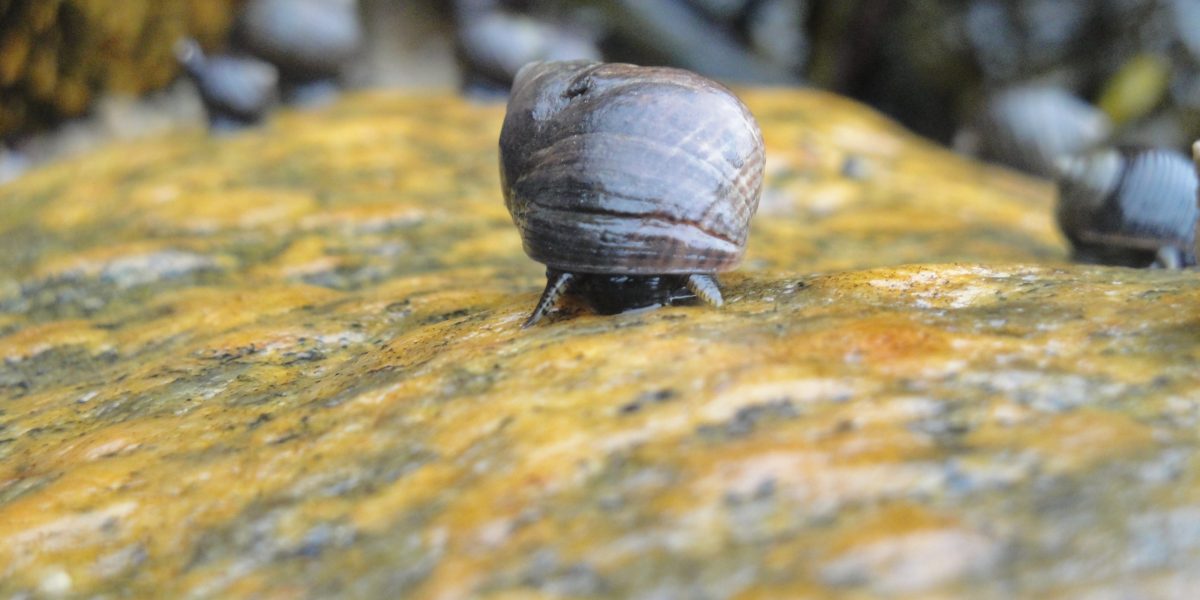Winkle

By Paul Morris from USA (Littorina littorea) [CC BY-SA 2.0], via Wikimedia Commons
Scientific Name: Littorina littorea
Also Known As: Periwinkle, edible winkle
MCRS: None
Description
A gastropod mollusc found on the shore, the shell reaches a maximum height of 52 mm. It is conical with a pointed apex with 5-6 slightly swollen whorls. Juveniles have spiral ridges which smooth out as they age. The shell colour ranges from grey, black, brown or red; the colouration often becomes lighter towards the apex of the shell. On the shores of the UK the edible winkle is one of at least four Littorinid species: the small periwinkle (Littorina neritoides), the rough winkle (Littorina saxatilis), and the flat winkle (Littorina obtusata). However, only the edible winkle is exploited for human consumption.
Habitat and Distribution
Found on all British and Irish coasts but rare or absent around the Isles of Scilly and the Channel Isles. The species is distributed from northern Spain to the White Sea in northern Russia. It is widely found on rocky coasts from the upper shore to the sublittoral and down to 60m, but not in the most exposed areas. A fairly tolerant species it can endure periods of exposure to air.
Life Cycle, Reproduction and Feeding
L. littorea is omnivorous and primarily feeds on algae but will feed on small invertebrates, detritus and microorganisms.
Breeding can take place throughout the year but varies depending on temperature. Sexes are separate and fertilisation occurs internally through copulation. Eggs are laid in capsules that float in the sea and free swimming larvae hatch after a few days. After six weeks in the ocean juveniles settle on the shore. They reach sexual maturity at 2-3 years of age and can live up to 5 years.
Additional Information
Winkles form part of rocky shore communities and can be heavily influenced by both biotic and abiotic factors. The length of exposure to air at low tide, temperature and weather as well as interactions with other species can change the winkles abundance and distribution on the shore.
In the NWIFCA District
Winkles are commercially collected sporadically throughout the year on the Drigg Coast in Cumbria. The level of fishing is typically low, with the amount varying based on the price and size of the winkles. Activity usually increases at the end of November and into December as the price and demand for winkles increases for the French Christmas market. Harvesting methods are low impact and very selective as individuals winkles are hand-picked from the shore.
Fisheries Management
The method of fishing winkles and the minimum size is regulated in part of the district. To find out more and where the regulations apply click here.
Where commercial hand-gathering occurs in Marine Protected Areas it undergoes an assessment to ensure the activity does not cause risk to conservation features. HRAs carried out for commercial hand-gathering in the District’s European Marine Sites can be found here.